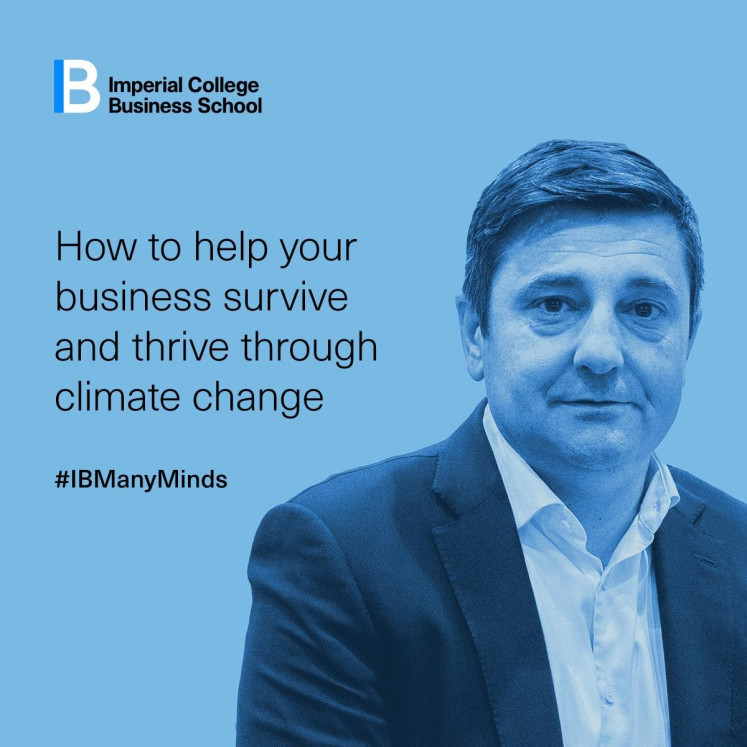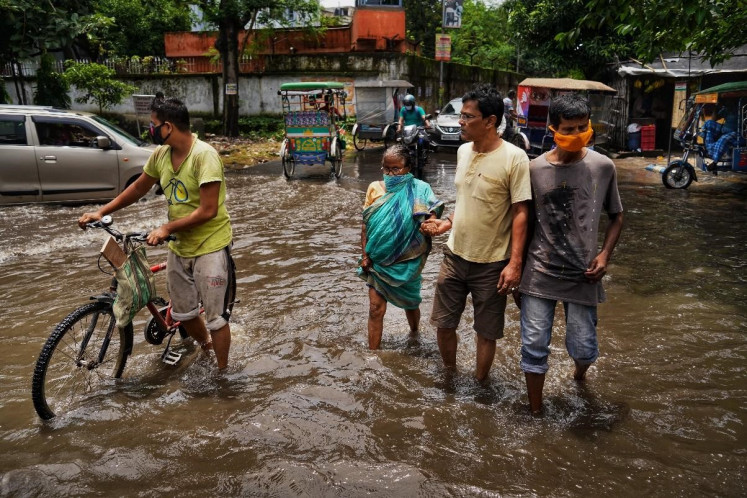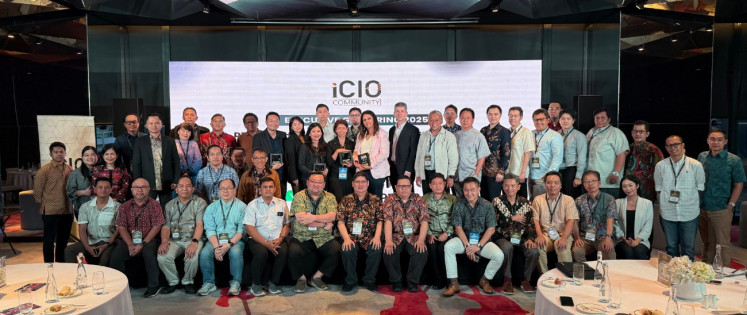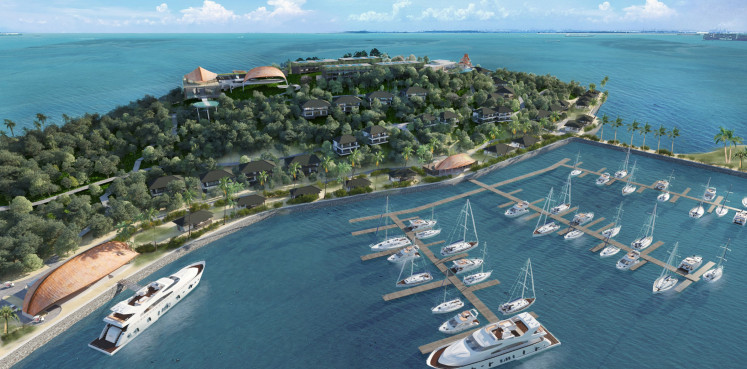Popular Reads
Top Results
Can't find what you're looking for?
View all search resultsPopular Reads
Top Results
Can't find what you're looking for?
View all search resultsHow machine learning can allow deeper understanding of climate change at local level
Change text size
Gift Premium Articles
to Anyone
R
esearchers from Imperial College Business School and the Singapore Green Finance Centre have used machine learning to reveal the impact of climate change at a local level, to within a square kilometer.
Southeast Asia’s warm and moist atmosphere, primarily modulated by the tropical ocean, creates an ideal environment for extreme rainfall. At the same time, the variability of rainfall patterns in the region is quite significant due to the local monsoon systems.
Most Southeast Asian countries have long coastlines exposed to frequent coastal surges as well as typhoons. However, global warming as caused by climate change brings with it a number of risks for the region, including sea level rise, increase in precipitation, and changes in rainfall variability and the monsoon system.
Sea level rise and increase in precipitation are associated with a worsening risk profile of storm surge and excess rainfall events, which can be broadly understood with global models but require downscaling to properly gauge impact at location.
By contrast, changes in rainfall variability cannot be easily analyzed with global models, as they are modulated by an evolving monsoon system. This in turn makes it challenging to predict the footprint of storm surge and extreme rainfall events throughout Southeast Asia.
Dr. Enrico Biffis, Associate Professor of Actuarial Finance at Imperial College Business School, acknowledges that while climate change will have a drastic impact upon the planet, the large-scale and complex global models may be too blunt a tool in showing how regions and countries will fare.
“Global models are the main method scientists use to understand how climate may change in the future. But if these models don’t delve into enough physical detail at a local level, are small coastal communities and nations with microclimates and varied geography subject to inaccurate projections and unfairly penalized by investors and insurers?
“If global models fail to flag urban hotspots where temperatures will soar high above regional averages, are we missing an opportunity to mitigate unforeseen climate shocks and save lives?” he postulated.
In downscaling, researchers from Imperial adopted a machine learning approach, allowing them to overcome the computational burden of the dynamical approach that can capture complex, non-linear relationships at the expense of computational tractability.
“Using advances in computing muscle, we’ve created some science-based tools that allow a tighter analysis - and the results are surprising,”
At the same time, machine learning allows the researchers to uncover interesting patterns in the spatio-temporal characteristics of relevant variables.
“We’ve deployed machine learning to combine data from the most up-to-date global climate projections with information about regional topography, microclimates and historical weather patterns. This has allowed us to disentangle data formerly lumped together to produce blanket national climate risk scores,” Biffis explained, adding that the tools allow the researchers to understand in finer resolution what appeared on a national map as a uniform risk.
The analysis, powered by machine learning, showcased some results that differ significantly from those projected by global models – not only in average climate risks but also in the likelihood and severity of extreme events, such as rainfall, coastal flooding and typhoons.
In some cases, global models overestimate these risks, and in others, they are too optimistic.
Supported by the Singapore Green Finance Centre, the research focused on Indonesia, Malaysia, the Philippines and Thailand. The nations were picked for their densely populated coastlines and their reputation for extreme rainfall driven by local monsoons.
The analysis revealed that the impact of global warming will be uneven, even at a local level. Global projections of rainfall in urban areas might be out by as much as 100 percent, while temperature forecasts might differ by 80 percent in some areas.
“We know how different modeling choices may result in wildly different future outcomes, but the local variations documented here pertain to individual models and are invisible in the coarser modeling.
“By design, climate models tend to be global, but we have managed to examine the impact of climate change to within a square kilometer, and our tools can reveal even greater detail by using more computational power.“
From the findings, Imperial researchers were able to reconstruct a national average risk, as well as a better understanding of potential for climate extremes. This allows them to identify specific cases, such as whether floods or high winds are more likely to the north or south of a nation, with the benefit of being able to be applied to other parts of the world with different geographies.
According to Biffis, Imperial allows a scope to collaborate with the wider scientific community to look at broader applications, as its model can be integrated with other climate science research to reveal in greater depth how risks of other climatic events will change.
“In Indonesia, for instance, peat fires can release dangerously high levels of carbon; knowing the economic and climate risks here could have an impact on our willingness or ability to curb emissions,” he explained.
Concluding his findings, Biffis noted that economic impacts are only part of the story. By using a range of state-of-the-art tools across different disciplines, he continues, researchers can build a more detailed and integrated picture and make the most of opportunities to act and mitigate climate impacts.
“Knowledge of what the world might look like in the face of climate change is in everyone’s interest.”
While others speculate on the future, our diverse minds at Imperial College Business School are designing and building it. For more insights from the world’s top academics and industry experts, visit the Many Minds Make Our Future page by Imperial College Business School.













